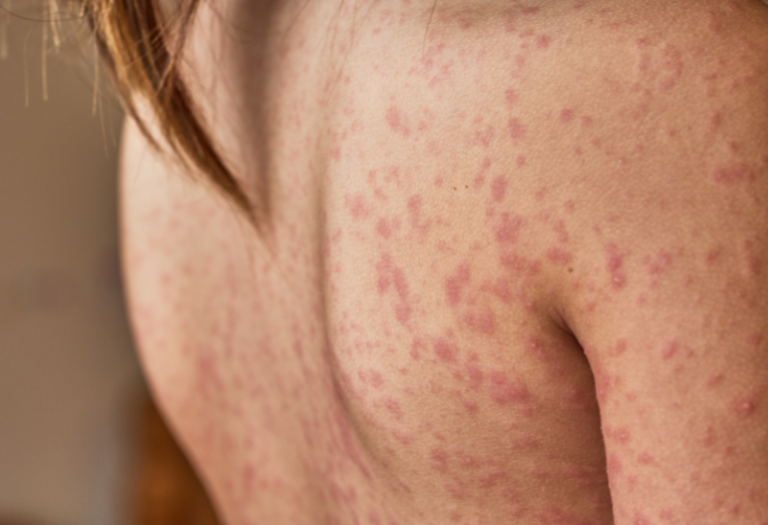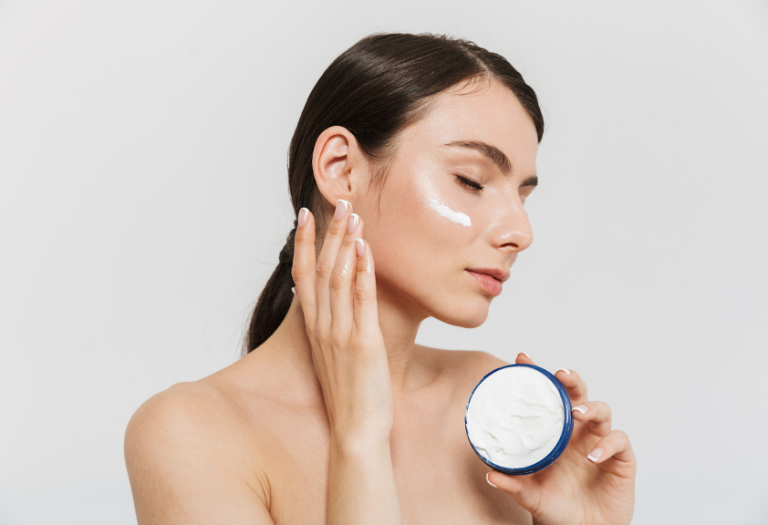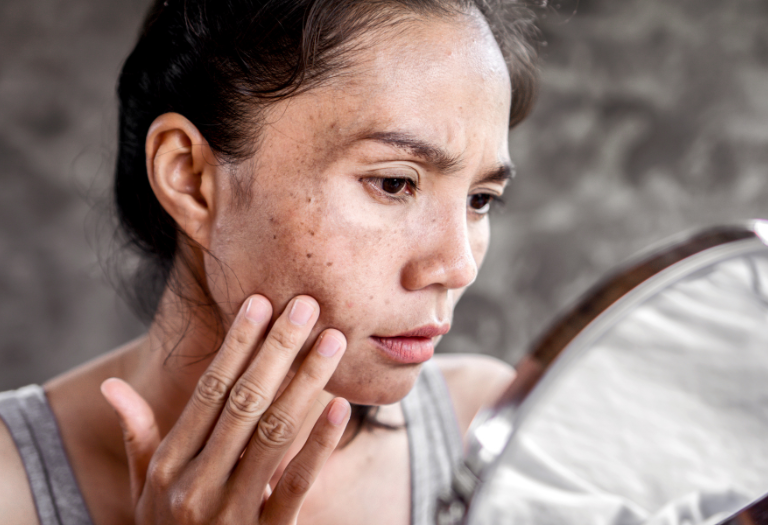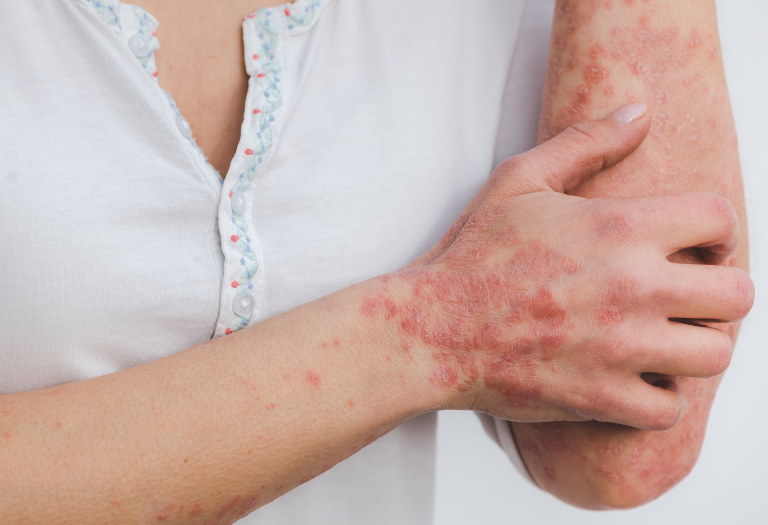Imagine stepping into the sun and suddenly feeling your skin flare—itchy bumps, rashes, and nail changes that don’t fade. For those with Darier disease, this is everyday life.
The condition doesn’t just affect the skin—it affects confidence, comfort, and quality of life. Flare-ups can arrive unexpectedly, making everyday choices, from what to wear to how to spend time outdoors, a constant challenge.
While Darier disease cannot yet be cured, there is hope. With today’s treatments, lifestyle strategies, and medical guidance, it is possible to manage symptoms, prevent complications, and reclaim control over daily life.
The condition doesn’t just affect the skin—it affects confidence, comfort, and quality of life. Flare-ups can arrive unexpectedly, making everyday choices, from what to wear to how to spend time outdoors, a constant challenge.
While Darier disease cannot yet be cured, there is hope. With today’s treatments, lifestyle strategies, and medical guidance, it is possible to manage symptoms, prevent complications, and reclaim control over daily life.
What Is Darier Disease?
Darier disease, also known as Darier-White disease or keratosis follicularis, is a rare genetic skin disorder that affects how skin cells stick together. It’s caused by mutations in the ATP2A2 gene, which disrupts calcium regulation in cells. As a result, skin becomes fragile, leading to greasy bumps, scaling, and patches that can be itchy, painful, or prone to infection.
The condition usually begins in childhood or adolescence and continues throughout life. While not contagious, it is inherited in an autosomal dominant pattern, meaning only one parent with the faulty gene can pass it on. Symptoms vary widely—even among family members. Some experience mild nail changes, while others face widespread rashes and discomfort.
Though incurable, Darier disease can be managed with medical treatments and daily care, helping reduce flare-ups and improve quality of life.
The condition usually begins in childhood or adolescence and continues throughout life. While not contagious, it is inherited in an autosomal dominant pattern, meaning only one parent with the faulty gene can pass it on. Symptoms vary widely—even among family members. Some experience mild nail changes, while others face widespread rashes and discomfort.
Though incurable, Darier disease can be managed with medical treatments and daily care, helping reduce flare-ups and improve quality of life.
Symptoms of Darier Disease
Darier disease shows up in many ways, and symptoms can range from mild to severe depending on the person. Most often, the condition begins in childhood or adolescence and continues throughout life, with flare-ups triggered by heat, stress, or infections.
Here are the most common signs:
Here are the most common signs:
Skin changes
Small, greasy, rough bumps (papules) that may merge into larger, scaly patches. These usually appear on the chest, back, scalp, forehead, and skin folds like armpits or groin.
Nail abnormalities
Fragile nails with V-shaped nicks, ridges, or red-and-white streaks are a hallmark of the disease.
Mouth involvement
Some people develop whitish bumps on the inside of the cheeks, gums, or roof of the mouth.
Odor and discomfort
Lesions may develop a noticeable smell due to bacterial growth, especially in sweaty areas.
Itching and burning
Flare-ups can bring irritation, worsened by heat or sun exposure.

Common Triggers and Flare-Up Factors
Living with Darier disease often means dealing with sudden flare-ups—times when symptoms become more noticeable or uncomfortable. While the condition itself is genetic, certain everyday factors can make it worse. Recognizing these triggers is key to managing symptoms.
Common triggers include:
- Heat and humidity: Warm, damp weather can irritate the skin and worsen lesions.
- Sun exposure: Too much sunlight often leads to flare-ups or painful burning.
- Sweating and friction: Physical activity, tight clothing, or rubbing in skin folds can aggravate bumps.
- Stress and fatigue: Emotional stress or lack of rest can trigger outbreaks.
- Skin infections: Bacterial, viral, or fungal infections can cause flare-ups or spread lesions.
- Medications: Certain drugs, such as lithium, may worsen symptoms.
Treatment Options for Darier Disease
Managing Darier disease is about more than just easing flare-ups—it’s about improving daily comfort, reducing infections, and protecting skin long-term. While there’s no permanent cure, dermatologists use a combination of therapies tailored to each person’s severity and lifestyle.
Treatment approaches generally fall into three levels:
Treatment approaches generally fall into three levels:

1. Topical Treatments
For many people with Darier disease, the first line of management starts with topical therapies—medications and skincare applied directly to the affected areas. These treatments aim to reduce scaling, calm inflammation, and prevent secondary infections.
Common options include:
- Retinoid creams (tretinoin, adapalene): Help improve skin cell turnover, reducing thickened bumps and scaling.
- Corticosteroid creams: Used during flare-ups to ease redness, irritation, and itching.
- Antibiotic or antifungal creams: Helpful when lesions become infected or show signs of bacterial or fungal overgrowth.
- Moisturizers and emollients: Keeping skin hydrated with gentle, fragrance-free creams reduces irritation and protects the skin barrier.
2. Oral Medications
When Darier disease is more widespread or resistant to creams and lotions, dermatologists may prescribe oral medications. These treatments work from the inside out, targeting the root of abnormal skin cell behavior and helping control flare-ups more effectively.
Key options include:
- Oral retinoids (acitretin, isotretinoin): These vitamin A derivatives are the most effective oral therapy for Darier disease. They normalize skin cell turnover, reduce thickened lesions, and improve overall skin appearance. However, they can cause side effects such as dry skin, nosebleeds, or increased sensitivity to sunlight, and require close medical monitoring.
- Antibiotics or antivirals: Prescribed if recurrent bacterial or viral infections (like herpes simplex) complicate the condition.
- Other systemic therapies: In rare, severe cases, immunosuppressive drugs may be considered, but this is less common.
3. Advanced Procedures and Therapies
For some people, topical and oral treatments may not fully control Darier disease symptoms—especially when thickened skin patches or stubborn lesions cause discomfort or cosmetic concerns. In these cases, dermatologists may recommend certain procedures to improve skin texture and appearance.
Common approaches include:
- Laser therapy: Techniques like CO₂ laser or erbium:YAG laser can remove thickened, warty lesions and smooth affected areas.
- Dermabrasion: A controlled skin-resurfacing technique that helps reduce scaling and uneven patches.
- Electrosurgery or cauterization: Used to carefully remove isolated lesions that don’t respond to other treatments.
- Surgical excision: In rare cases, particularly resistant or localized lesions may be surgically removed.
Living With Darier Disease: Daily Care Tips
Managing Darier disease isn’t just about prescriptions—it’s also about daily habits that help keep flare-ups under control. Small lifestyle adjustments can make a big difference in comfort and confidence.
Here are some dermatologist-recommended tips:
Here are some dermatologist-recommended tips:
- Choose breathable clothing: Loose, cotton fabrics reduce sweating and friction that can irritate the skin.
- Moisturize daily: Use fragrance-free, gentle creams or ointments to keep skin hydrated and prevent dryness.
- Protect from heat and sun: Stay cool during hot weather, use sunscreen, and avoid prolonged sun exposure to minimize flare-ups.
- Gentle cleansing: Wash with mild, non-soap cleansers—skip harsh scrubbing, which can damage fragile skin.
- Manage stress: Relaxation techniques like meditation, yoga, or breathing exercises can help, since stress is a common trigger.
- Stay alert for infections: Redness, swelling, or pus around lesions may signal an infection—prompt medical care helps prevent worsening.
- Work with a dermatologist: Regular check-ins ensure treatments are adjusted as needed.

Complications to Watch For
While Darier disease itself is not life-threatening, it can lead to several complications if left unmanaged. Recognizing these risks early can help prevent worsening symptoms and improve long-term outcomes.
- Skin infections: Open lesions are prone to bacterial, viral, or fungal infections, which may cause pain, pus, or worsening odor.
- Scarring and thickened patches: Repeated flare-ups can leave behind scars or areas of rough, thickened skin.
- Emotional and social impact: Visible skin changes may affect self-esteem and lead to anxiety or depression.
- Odor issues: Overgrowth of bacteria in lesions can create an unpleasant smell, adding to emotional stress.
- Increased skin cancer risk: Rarely, long-term sun-exposed lesions may raise the risk of certain skin cancers.

Don’t risk your health on guesswork
Book a consultation with our medical
marijuana experts today!
marijuana experts today!
Frequently Asked Questions
1. Is Darier disease contagious?
No. Darier disease is a genetic condition and cannot be spread from person to person.
2. At what age does Darier disease usually appear?
Most people develop symptoms in childhood or adolescence, though severity can increase with age.
3. Can Darier disease go away on its own?
No. It is a lifelong condition, but treatments can control flare-ups and improve skin health.
4. Do flare-ups happen all year round?
Flare-ups often worsen in summer due to heat and humidity but may occur anytime when triggered.
5. Does diet affect Darier disease?
There’s no special diet to cure it, but eating balanced, anti-inflammatory foods and avoiding alcohol may help reduce flare frequency.
6. Can stress make Darier disease worse?
Yes. Emotional stress and fatigue are well-known triggers that can worsen symptoms.
7. What is the best treatment for Darier disease?
Treatment depends on severity. Topical creams help mild cases, while oral retinoids are used for more severe disease under medical supervision.
8. Can Darier disease affect the nails and mouth?
Yes. Many patients develop nail changes such as ridges, V-shaped nicks, or streaks. Small white bumps may also appear inside the mouth.
9. Is Darier disease linked to skin cancer?
While rare, long-term sun damage in affected areas may slightly increase the risk of skin cancers. Protecting your skin from the sun is important.
10. Can children inherit Darier disease if one parent has it?
Yes. Because it’s autosomal dominant, a child has a 50% chance of inheriting the condition if one parent carries the gene mutation.

Take the Next Step Toward Relief
Living with Darier disease is tough—but relief may be closer than you think.
- Fill out a quick, secure form
- Meet with a licensed cannabis doctor
- Get your medical card and access dispensaries
Ready to find the
perfect strain for your needs?
Navigating the complexities of medical marijuana laws can be tricky, but with the right information, you can protect your privacy and your rights as a medical cannabis cardholder. At Marijuana Specialist Near Me, we make the process of obtaining a medical marijuana card straightforward, with online consultations and guidance through the legal landscape, ensuring you’re well informed about how your card can be used without compromising your privacy.


